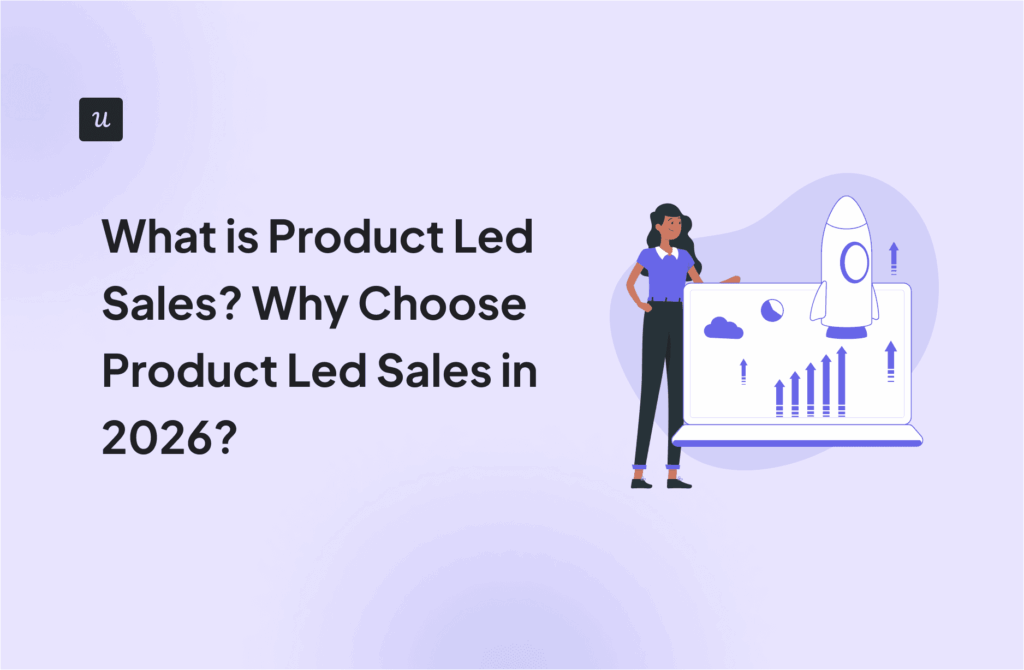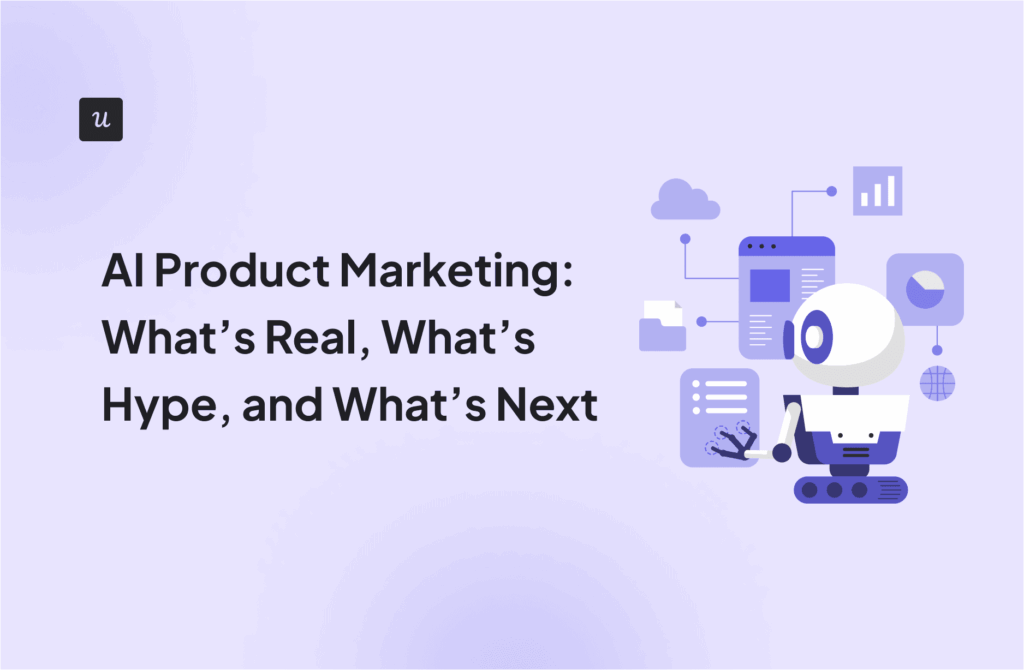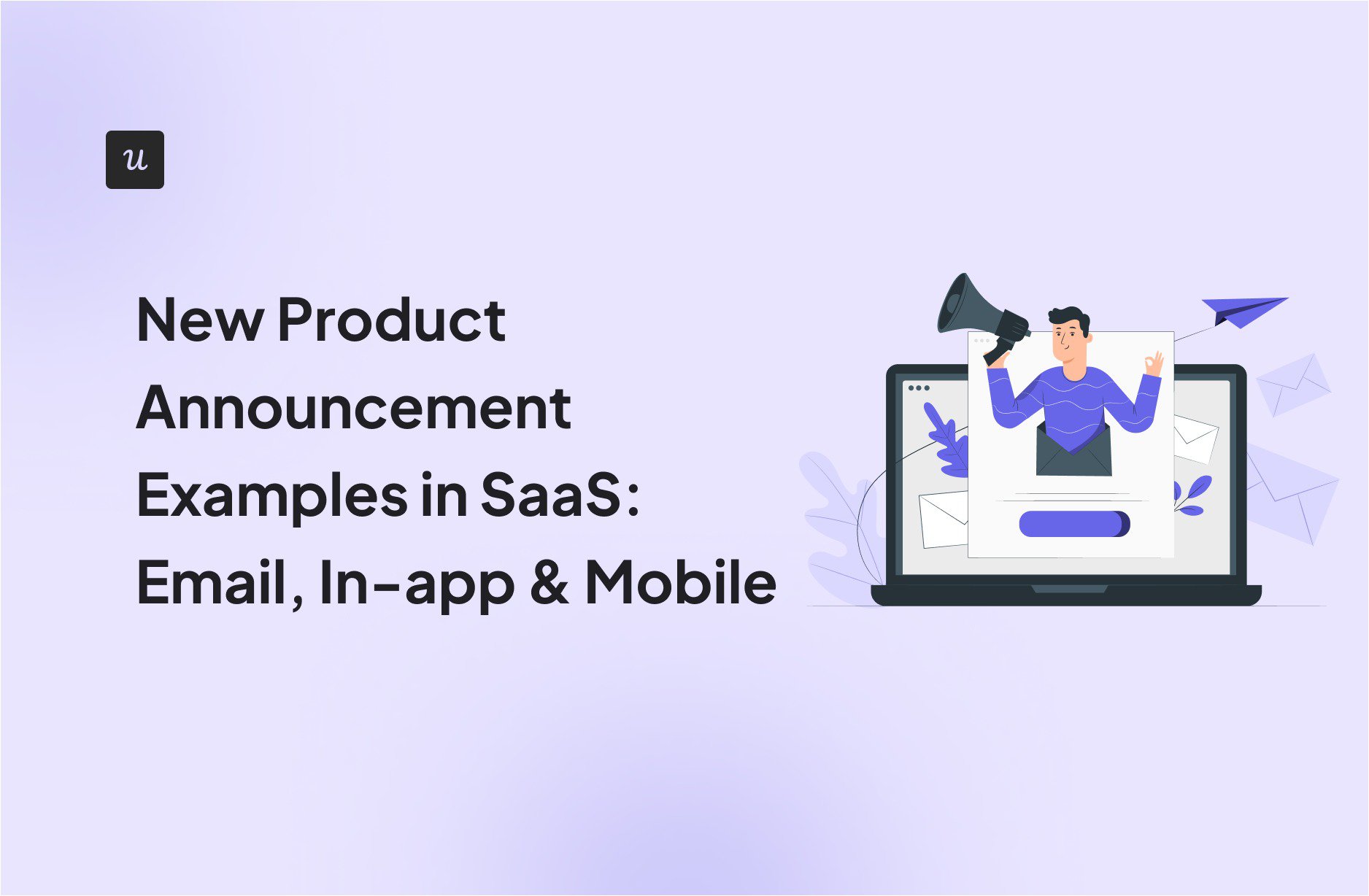
Every year, nearly 30,000 new products are launched, and 95% of them fail.
Product announcements serve as the bridge between product launches and user behavior. These announcements about the product launch inform the users about new features & updates through multiple channels.
You can make these announcements in the form of:
- Product launch email sequence (most common for existing users).
- In-app announcement notifications (contextual & timely).
- Social media posts (broader & public reach).
- Blog post and document updates.
In this post, we will go through product announcement examples via email, in-app, and mobile.
What’s the biggest challenge with your current new product announcement process?
How do you currently announce new features to your users?
How personalized is your new product announcement messaging?
Ready to perfect your new product announcement strategy?
Stop guessing and start delivering targeted, effective in-app announcements that drive adoption. See how Userpilot can help you reach the right users and measure the impact of every launch.
Try Userpilot Now
See Why 1,000+ Teams Choose Userpilot

Product launch email announcement examples
Your inbox gets 121 emails daily, but only a few make you stop and click. What separates captivating product launch emails from those that get instantly deleted?
These product launch email announcement examples showcase the precise elements that transform routine updates into engagement magnets.
Airtable Assistant announcement email
Airtable Assistant is an AI-powered native copilot to help you turn your data into insights, automations, and agents that work for you. To announce this, Airtable sent out this email announcement.

Here’s what I liked & what was right with this product announcement email:
- Product visuals: Multiple screenshots showing the product in action. This can help build excitement for the new feature, especially among existing customers. The email showcases distinctive real-life use cases of using Airtable Assistance, accompanied by screenshots.
- Rollout details: Clear details about the launch day of the upcoming event, along with a Q&A for eligible accounts.
- Clear CTA: The email features a frictionless CTA (complementing the subject line) that doesn’t distract, subtly creating a sense of FOMO, as only users who register will gain early access to the feature release.
Wunderkind’s new feature announcement email
Wunderkind AI identifies your anonymous visitors and automatically sends them personalized messages across all channels. It connects the dots between various devices and behaviors to turn unknown traffic into potential customers.

While this email may seem intriguing, it’s pretty simple when viewed from a product marketing manager’s perspective.
Here’s what I liked & what was right with this product announcement email:
- Revenue-first messaging: The copy immediately talks about revenue ($8.008M) to connect with potential customers who often need to justify the ROI to stakeholders and demonstrate the business impact.
- Value proposition breakdown: The dedicated sections for Wunderkind analytics and AI address the benefits, addressing the “what’s in it for me” questions of the target customers.
- Personalized approach: The copy addresses the exact problems product managers face by discussing how “traditional campaign-based marketing is becoming less effective.”
Figma plugins announcement email
Figma revolutionized how we create designs. With Figma plugins, the platform opened itself to a massive user base, enabling developers to create plugins for the platform.

Here’s what I liked & what was right with this product announcement email:
- The hook: I liked how the email body mentions beta testers to establish authority. A product feature brought by beta testers must be trustworthy.
- Plugin categories: I liked how the plugin overview is presented in simple categories. If I’ve hardly used Figma before, this would surely make me want to use it, considering how easy it is to create designs.
- Product transition: One thing I liked about the email is how it positions Figma as a design platform, transitioning from a design tool. With community-powered plugins, Figma is no longer a design tool; it’s part of an ecosystem run by the community.
Slack’s product launch email sequence
Slack is how industry professionals communicate with each other during and after work hours. The email demonstrates a unique approach to product announcements by focusing on educating users about their workflows rather than traditional feature marketing.

Here’s what I liked & what was right with this product announcement email:
- Non-boring educational tone: Most educational emails I receive are boring. None of those emails focuses on my workflow. Unlike those emails, this email from Slack isn’t boring. Even though this is indeed an educational email, focusing on workflow makes it about the end user.
- Multi-persona use cases: In the header image, the copy addresses various use cases of Slack users. The copy discusses employee onboarding, sharing CRM details, and meeting-related tasks to convey that the Slack tips are relevant to them.
- Resource center strategy: With these tips, Slack has created a permanent knowledge base that end users can share with new team members. Furthermore, these tips are indexed on search engines, which drives high-quality search traffic.
Squarespace’s early access email announcement
Squarespace’s simple product launch announcement email ticks all the boxes of what a good announcement email should look like.

Here’s what I liked & what was right with this product announcement email:
- Incentive: Apart from inviting the user to try out the feature release, the email also highlights six key advantages of doing so. This answers the “what’s in it for me” question of the end user.
- CTA placements: I liked how the same CTA is placed twice in the email. The first CTA is designed to capture the intent, and the second one is strategically placed after curiosity peaks.
In-app feature announcement examples
For times when you need to announce a new feature release to users of your web app, I’ve curated a few examples that you can take inspiration from. In-app product announcements are more effective than teaser emails when adoption is a crucial KPI, and you can also track engagement.
Userpilot’s new feature release
I’ll be biased here. At Userpilot, we help you launch your product, announce new features, educate existing users, and re-engage inactive users.

Since this screenshot is from Userpilot, I can tell you precisely what went on behind the scenes and why it worked.
- Real product demo: We included a real screenshot in the tooltip, allowing users to see what the actual feature would look like.
- Minimal friction: The tooltip explains how the end user can collect data and set user properties without relying on the engineering team to share specific details.
- No jargon: We chose to keep the language simple enough for non-technical users to understand and utilize the feature.
- Keeping the user in control: With the “Got it” button, we made sure the user was in the driver’s seat.
Google Meet’s new feature release
Google Meet announces the new feature of filtering background noise. The notification directly appears within the Google Meet interface during an active call.

Here’s what I liked & what was right with this product announcement:
- User-centric messaging: The headline “People can hear you better” focuses on the end user, rather than using technical jargon about “audio processing algorithms“. This copy has nothing to do with the feature and everything to do with the outcome.
- Feature explanation: The new release clearly explains how the filtering feature will help reduce background noise picked up by the microphone. This provides the end user with context on what the feature is about. Notice how the tooltip shows the arrow, indicating where the user can find the filter later.
- Quick adoption: The announcement appears in real-time during product usage, enabling users to understand and utilize the filter immediately.
Segment’s new feature announcement
Segment highlights two key features in this upcoming release: profile sync & Reverse ETL (Extract, Transform, and Load). A lot is happening in this announcement of the upcoming features. Users will not only get to beta test, but the announcement can also create anticipation.
Here’s what I liked & what was right with this product announcement:
- No-pressure adoption: The “optional beta offering” eases the burden for loyal customers. The brief explanation tells the most important aspects of the feature without disrupting the core user experience.
- No information overload: The pagination (1/3) prevents information overload for busy business professionals, ensuring comprehensive coverage of relevant details and probable feature adoption.
- Technical benefit translation: The copy explains complex data engineering concepts in simple terms that align with the business value proposition.
ChatGPT 4o official launch
OpenAI begins its announcement with the most essential element in a business transaction: “You.” New customers seeing this will pay attention to the further explanation.

Here’s what I liked & what was right with this product launch:
- Perfect placements: The modal pop-up appears after logging in, catching the attention of the right audience at the right time.
- Single-action focus: The modal gives clear direction for the user to try out the new product. Logically, limiting options and distractions during a product tour increases the adoption rate of the new feature or product.
- Visually appealing: The modal uses colorful graphics to announce without annoying the user.
AngelList’s product launch modal
AngelList announces the benefits of the new product, covering the most critical outcomes for the users before they explore the interface.

Here’s what I liked & what was right with this product launch:
- Solving pain points: The product announcement positions “Source” as a solution for the “top talent pool” problem.
- Detailed filtering: I like how the core feature of the new product has been highlighted. The “apply up to 30 signals to filter out noise” speaks volumes about the new feature, especially for the early users.
- Workflow-friendly: The “pitch candidates instantly” messaging integrates seamlessly with hiring managers’ existing workflows, eliminating the need for process revamps.
New product announcement examples via mobile app
For users constantly on the run, mobile user experience is equally important. I’ve curated a few product launch announcement examples for mobile as well.
Jar highlighted a new feature launch (GoldX) with a spotlight
Jar showcases the new feature with a catchy subject line that focuses on the outcome for the user rather than the product release itself.
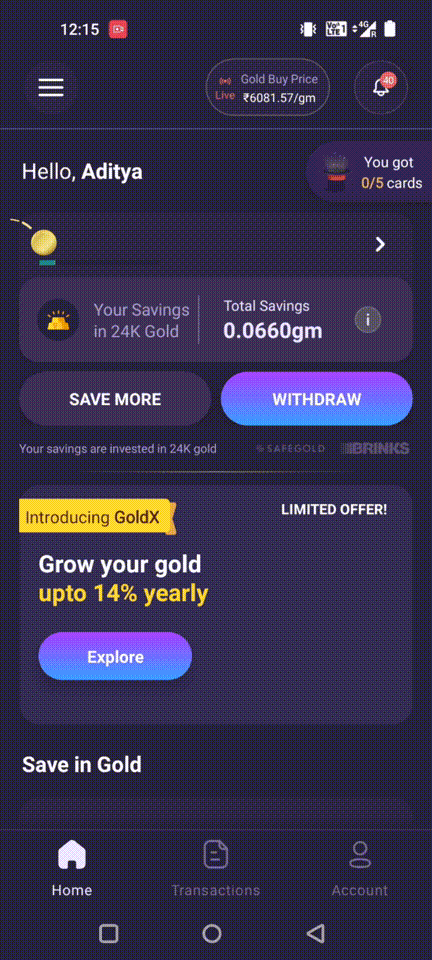
Here’s what I liked & what was right with this product launch:
- Prime visuals: The announcement takes center stage without disrupting the user’s routine workflow.
- Urgency: The “Limited offer!” creates anticipation and adoption urgency without aggressive sales tactics.
- Easy adoption: The animation in the dashboard, which displays the message “Your first gold coin,” facilitates adoption and a successful launch, particularly when a user installs the new mobile app.
Headway announced the Spaced Repetition feature with a carousel
Headway used flashcards for a walkthrough of the product release. Such carousels take care of educating users about product releases even after the launch date.
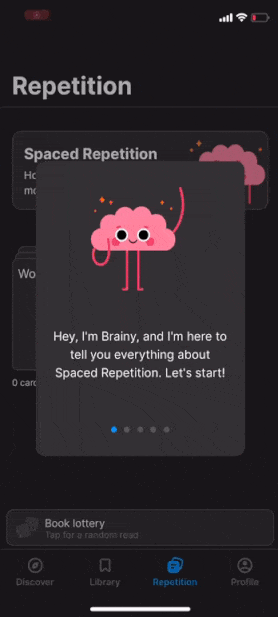
Here’s what I liked & what was right with this product launch:
- Non-technical language: The product release announcement explains the new “Spaced Repetition” feature without any jargon.
- Retention-focused communication: The product launch focuses on meta-learning by using a memorable character with a catchy subject line.
- Tutorial-style activation: By using a friendly character, the announcement reduces the intimidation factor of learning and adopting yet another product launch.
Spotify’s new app redesign launch
Spotify’s new product launch announcement features vertical feeds to help users discover music, podcasts, and audiobooks.

Here’s what I liked & what was right with this product launch:
- Multiple touchpoints: Showing numerous use cases of this update on a single screen demonstrates how three different personas can leverage the same feature.
- Visual proof: The interface designs show how different content types can be accommodated on the same screen.
- Engaging structure: The three screens show a logical progression from active listening to content discovery.
Duolingo’s new personal AI tutor launch
The last one on our product announcement examples list is Duolingo. Duolingo introduced its new subscription tier, an AI-powered personal tutor that helps with role-plays and explains answers in the language you’re learning.

Here’s what I liked & what was right with this product launch:
- Gamified learning: The new business announcement includes gamified challenges and a CTA to get 40XP at the end of the challenge.
- AI feature demonstration: The screen displays the “Explain My Answer” functionality, illustrating real-time grammar explanations.
- Limited testing: The product announcement example informs the user that Duolingo Max is available in only a select few countries to learn French and Spanish. This also encourages users to prepare to pre-order.
How to prepare for product announcements
Now that we have gone through some great product announcement examples. Let’s take a look at how to create these announcements.
Here’s how you can prepare for that big launch day:
- Define the persona you want to target: Begin with your target audience’s age, location, professional details, and use cases. But dig deeper to find values, motivations, and behavioral patterns you can use to create a compelling product launch email.
- Focus on workflow: Identify the goals and ambitions of your audience. These can be daily tasks or workflows, as well as KPIs that your target audience is responsible for.
- Map the pain points: Once you identify the workflow, identify the pain points related to that workflow.
- Create the content: Compile all this information and create launch email, In-app, and mobile announcement copies. Speak their language in the copy you make.
- Segment and personalize: To make sense of the data, segment users based on their behavior, allowing you to target them accordingly.
- Adopt omnichannel messaging approach: Depending on the platform your audience is using, choose the channel accordingly. If you decide to use email announcements, have launch email examples and templates handy. This will save a lot of time when creating an email announcement rather than staring at a blank page.
How can Userpilot help you create new product announcements?
Userpilot can help you create an omnichannel product announcement strategy and analyze impacts for each channel.

Here’s how Userpilot can take care of the omnichannel experience:
- In-app messaging: You can use modals, tooltips, and slideouts to announce new features. You can use driven actions to educate users on how to use a tool by making them take the steps to get hands-on experience.
- Mobile experiences: Userpilot also helps with creating an in-app mobile experience. You can onboard users, create push notifications and mobile surveys, and even track analytics about mobile user engagement.
- Email campaigns: In upcoming versions of Userpilot will have a built-in email feature. This will be only for in-app engagement and not generic email automations. The features are planned for Product, Growth, and Life Cycle marketers. Userpilot will help with in-app messaging at each stage of the buyer’s journey.
You can use templates, use blocks, and embed signatures to create personalized email bodies, pre-order announcement emails, product launch emails, and more.
Supercharge your product launch with Userpilot
In this article, we examined effective product announcement examples and why understanding the audience, omnichannel delivery, benefit-first messaging, and measurable KPIs can turn product announcements into adoption curves.
The SaaS market is already flooding users with updates. With Userpilot, you can master structured launch playbooks that you can reuse with ease.
Ready to create high-impact product launches? Book a free Userpilot demo to see how it can help you personalize user onboarding, product announcements, and feature adoption to the next level.
FAQ
How do I announce a new product?
To announce a new product, identify your target audience, and choose multiple channels (in-app, mobile, and email) to promote the launch. Craft clear messaging focused on the outcome for the end user.
What is an example of an announcement?
Here’s a product announcement example: “We’re excited to introduce our AI-powered analytics dashboard! This new feature enables you to track user behavior more efficiently. With real-time insights and automated reporting, you can boost your productivity.”
How to write an email for an announcement?
In the launch email, start with an attention-grabbing subject line that introduces the key announcement. Focus on the outcome, keeping content concise with clear visual elements and clear CTAs.
What is an example of an announcement message?
Here’s an announcement example: “Breaking news! We’re launching our new mobile app this Monday, featuring instant notifications, offline access, and seamless sync. Beta users have reported completing tasks 40% faster. Download here [link]. Limited bonus: Premium features for first 1000 users at a discounted price.“
How to make a catchy announcement?
Using words like “Breaking”, “Exclusive”, or “Limited-time” creates urgency. Highlight specific outcomes with numbers and deadlines to engage the users.








